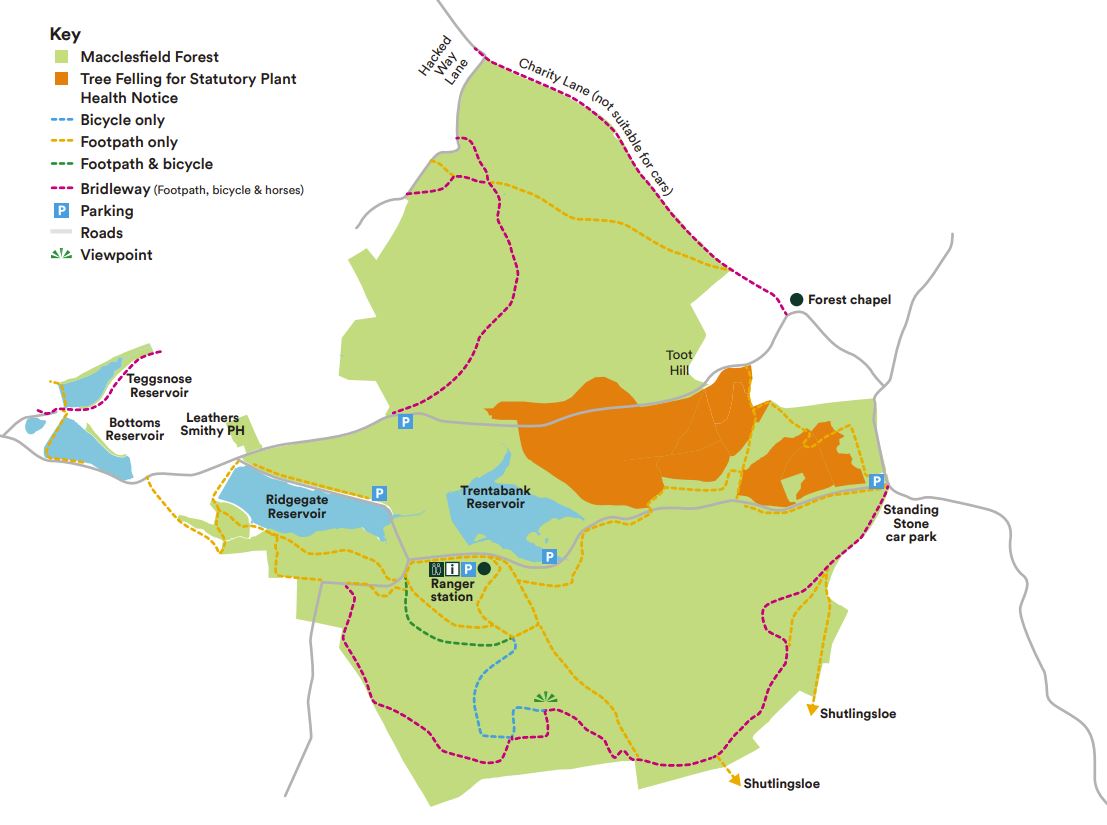Larch Disease
Phytophthora Ramorum is affecting large areas of land across the UK, including here in the North West.
Our woodland teams work really hard to manage catchment land around all our reservoirs and sites to:
- Help protect the quality of water which flows through the catchment and into the reservoir
- Provide a diverse and sustainable landscape for recreational use and to encourage wildlife
We’re really saddened when we have to fell trees on our sites, but sometimes it's essential to control and prevent the spread of disease.
